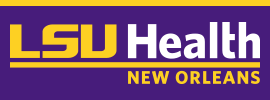Location
LSUHSC - New Orleans
Event Website
https://publichealth.lsuhsc.edu/honorsday/2024/default.aspx
Start Date
2-4-2024 9:00 AM
Description
Background: Gentilly, a central New Orleans neighborhood, is noted as a racially diverse and historic community. Limited sources provide insight into the Gentilly community’s makeup and needs, particularly identifiable existing services, resources, and supports for individuals living with disabilities.
This study aimed to identify existing community resources and demographics to gain insight into the community’s strengths and needs.
Methods: We conducted a community needs assessment using community asset mapping and descriptive analyses with academic partners (LSUHSC Human Development Center and School of Public Health) and community partners (Split Second Foundation and FQHC). The US Census Bureau’s national data was analyzed, and the demographics of individuals with disabilities who use the Split Second Foundation were surveyed. Existing resources serviceable to people with disabilities were identified, including Medicaid services, recreational centers, and disability services. Altogether, this provided a macroscopic understanding of the community.
Results: Our analysis identified 14.5% (n=10,700) of Gentilly as having a disability higher than the national average of 11.6%. Demographic analyses designated 68.7% of the community as Black/African American, 21.9% earning income below the poverty level, and 39.4% not in the labor force. The Gentilly neighborhood consists of two community health centers serving the public, varied disability-related programs, health and social services, recreational spaces, and grocery stores.
Conclusions: The Gentilly neighborhood is a community of color with high rates of those with disability and who are insured. We also identified lower- than-average income and employment rates. While community services exist, we know little about the availability and quality of these resources.
Recommendations: Further study is needed to collaborate with community partners to conduct qualitative interviews/focus groups with community members to determine the community's availability of services and needs. This may assist with garnering insight into the community’s perceived needs and identifying ways to address unknown community deficits.
Recommended Citation
Gonzalez, Gabrielle; Witmeier, K N.; Norman, M; Wilson, P; Delahoussaye, M; and Tseng, TS, "Asset Mapping for People with Disabilities in Gentilly Community" (2024). School of Public Health Delta Omega Honors Day Poster Sessions. 4.
https://digitalscholar.lsuhsc.edu/dohd/2024/2024/4
Asset Mapping for People with Disabilities in Gentilly Community
LSUHSC - New Orleans
Background: Gentilly, a central New Orleans neighborhood, is noted as a racially diverse and historic community. Limited sources provide insight into the Gentilly community’s makeup and needs, particularly identifiable existing services, resources, and supports for individuals living with disabilities.
This study aimed to identify existing community resources and demographics to gain insight into the community’s strengths and needs.
Methods: We conducted a community needs assessment using community asset mapping and descriptive analyses with academic partners (LSUHSC Human Development Center and School of Public Health) and community partners (Split Second Foundation and FQHC). The US Census Bureau’s national data was analyzed, and the demographics of individuals with disabilities who use the Split Second Foundation were surveyed. Existing resources serviceable to people with disabilities were identified, including Medicaid services, recreational centers, and disability services. Altogether, this provided a macroscopic understanding of the community.
Results: Our analysis identified 14.5% (n=10,700) of Gentilly as having a disability higher than the national average of 11.6%. Demographic analyses designated 68.7% of the community as Black/African American, 21.9% earning income below the poverty level, and 39.4% not in the labor force. The Gentilly neighborhood consists of two community health centers serving the public, varied disability-related programs, health and social services, recreational spaces, and grocery stores.
Conclusions: The Gentilly neighborhood is a community of color with high rates of those with disability and who are insured. We also identified lower- than-average income and employment rates. While community services exist, we know little about the availability and quality of these resources.
Recommendations: Further study is needed to collaborate with community partners to conduct qualitative interviews/focus groups with community members to determine the community's availability of services and needs. This may assist with garnering insight into the community’s perceived needs and identifying ways to address unknown community deficits.
https://digitalscholar.lsuhsc.edu/dohd/2024/2024/4

